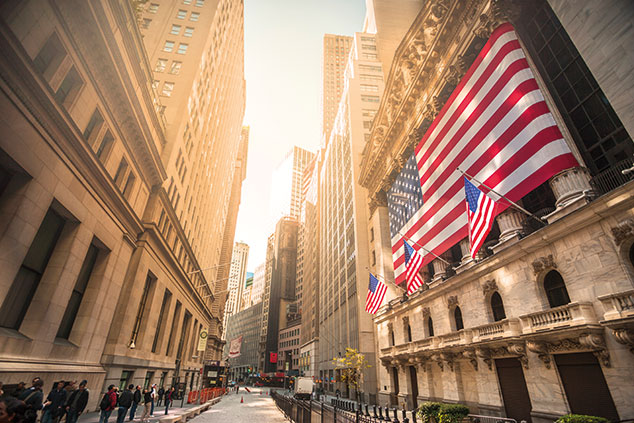
This is partly due to improved data. After last year’s wobble, the US economy is regaining its strength. “Mortgage applications… and durable goods orders indicate a steadying of the ship,” says Tan Kai Xian in a Gavekal Research note. In other positive news, both Chinese and US manufacturing data have improved. The two superpowers may also be on the verge of a trade deal, another development fuelling confidence.
What’s more, the section of the yield curve that briefly inverted (a signal of recession, as we noted last week) is back to normal again. US employment continues to be strong with 180,000 jobs created in March, and an unemployment rate of 3.8%, the lowest level since 1969. Average hourly wages have grown 3.4% year-on-year, which bodes well for consumption.
Earnings are expected to bounce
One consequence of the tight labour market and wage growth is that corporate profits have come under pressure. Companies “increasingly struggle” to pass on costs of wages, transportation and raw materials to customers, says Andrew Edgecliffe-Johnson in the Financial Times. US companies’ profits are not only squeezed because of rising wages, but also because of the recent spurt in oil prices, which are up 32% in the first quarter following output cuts by Russia and oil exporters’ cartel Opec. As a result, expectations for S&P 500 earnings growth in the second quarter are currently flat, notes Michael Mackenzie in the Financial Times. But markets believe that earnings growth will accelerate later this year because “central banks have recognised the limits of tightening policy and are on standby to provide further easing”.
Goldilocks is back
A “Goldilocks” scenario has returned, says Justin Lahart in The Wall Street Journal. It now seems pretty clear that the economy’s “first-quarter soft patch was, in fact, a patch, and that the second quarter will look a whole lot better”. Indeed, the Fed’s signal at its last meeting “that it doesn’t expect to raise rates this year is looking as if it was too hard a tack into dovish territory.” The good news for investors, however, is that it is likely to take some time, and a lot more good data, for the US Federal Reserve to consider revisiting its new hands-off approach to monetary tightening.
For now, then, a strengthening US economy and a dovish Fed bode well for US and global liquidity. “Eventually the central bank could take the punchbowl away, but for now the drinks are on the house.” So the US-led global stockmarket rally looks set to keep going. Expect small caps to lead the way, says Xian: they tend to do best in a recovery phase with a steepening yield curve.